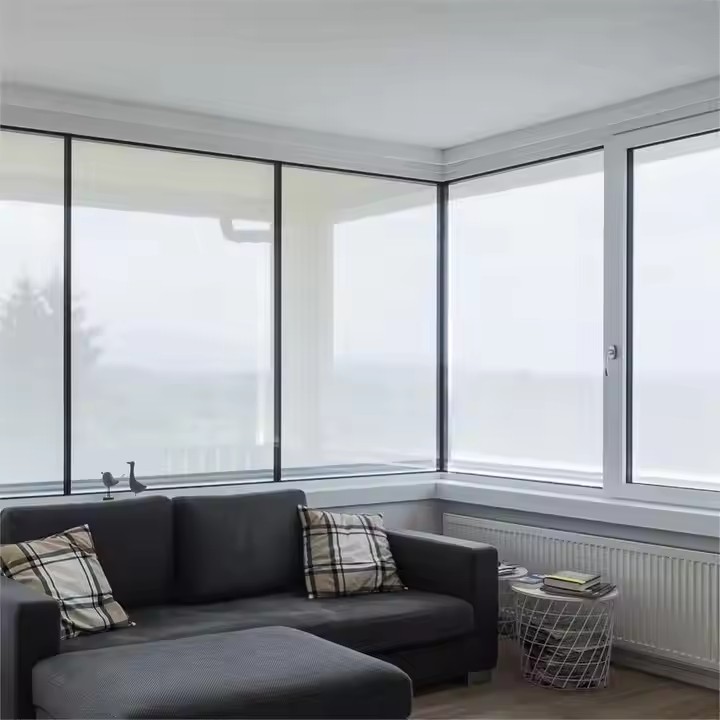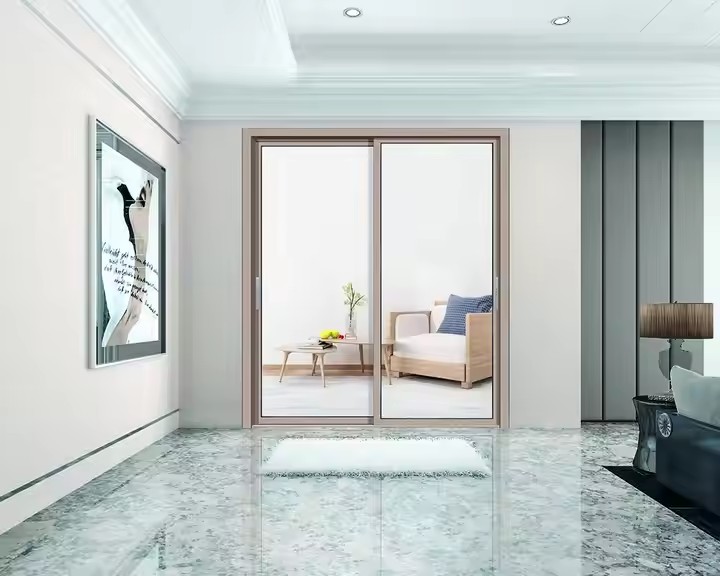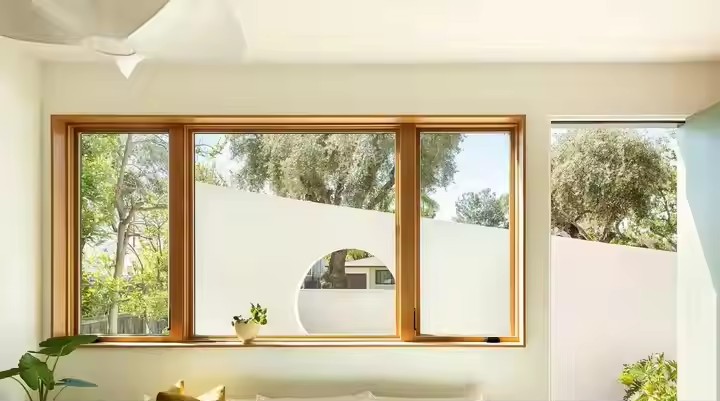- Frame Material: The Core Foundation of Strength and Environmental Resistance
The folding door frame bears the overall structural load and resists external forces such as strong winds and impacts. Therefore, its material must balance structural strength and resistance to corrosion and aging, especially under Australia’s extreme climate conditions.
If a high-strength material lacks weather resistance, it may deform or crack over time, ultimately reducing its durability.
Among mainstream frame materials, high-strength aluminum alloy and treated solid wood are the most reliable choices in terms of both strength and environmental adaptability, while PVC and ordinary steel are less suitable for Australian environments due to performance limitations.
(1) High-Strength Aluminum Alloy — The “First Choice” for All-Scenario Durability
In the Australian folding door market, aluminum alloy frames account for over 70% of installations. Their core advantage lies in the balance of high strength, light weight, and excellent weather resistance, making them ideal for high-temperature, coastal, and windy regions.
Structural strength:
Using 6063-T5/T6 series industrial-grade aluminum alloy profiles, tensile strength reaches 210–260 MPa and yield strength 170–240 MPa — far exceeding PVC (around 50 MPa).
This allows the frame to withstand repeated opening and closing without deformation caused by thermal expansion and contraction (outdoor temperatures in Australian summers often exceed 40°C).

Recommended frame thickness:
Residential: 1.4–2.0 mm
Commercial / Large-span doors: 2.0–3.0 mm
Some brands employ multi-chamber cavity designs to enhance resistance to bending and torsion, preventing side deflection under strong winds.
Environmental resistance:
Surface finishing is crucial to aluminum’s adaptability to Australian conditions.
Coastal regions: Prefer PVDF (fluorocarbon) coating or powder coating (≥60 μm). PVDF coating offers over 5,000 hours of salt spray resistance (vs. 1,000 hours for standard coatings), preventing rust and paint peeling.
Inland high-temperature regions: Anodized finishes are ideal, tolerating short-term temperatures up to 150°C, with surface hardness ≥ Mohs 3, resistant to scratches and surface wear.
Best suited regions:
Almost all parts of Australia — especially Sydney, Melbourne (temperate & windy), Gold Coast (coastal high salt exposure), and Perth (hot & arid). Aluminum is considered the “safe and universal” material choice for folding doors.
(2) Anti-Corrosive Solid Wood — A Balance of Natural Aesthetics and Strength
Solid wood frames are favored for their natural appearance, but their durability depends heavily on wood species and treatment process, making them suitable for milder, temperate inland regions in southeast Australia.
Structural strength:
Recommended hardwoods include teak, acacia (Australian hardwood), and merbau, known for high natural density (0.6–0.8 g/cm³ for teak) and strong compressive strength (around 70 MPa for acacia).
These woods also contain natural oils, providing better insect and decay resistance than pine or cedar.
To ensure long-term stability, wood should undergo:
Vacuum degreasing: reduces deformation (≤1%)
High-temperature carbonization: increases surface hardness
Anti-corrosion impregnation: prevents mold and termite damage in humid areas
Limitations:
Although structurally strong, solid wood is 30–50% heavier than aluminum of the same size, requiring stronger hardware support.
Weather resistance is weaker — long-term UV and salt exposure can cause cracking and fading. In coastal regions, annual or biannual reapplication of protective coating is necessary, increasing maintenance costs.

Best suited regions:
Southeastern rural and villa areas (e.g., Victoria, South Australia), but not recommended for coastal or high-UV environments.
(3) Other Materials — Limited Strength or Adaptability
PVC (uPVC): Low tensile strength; easily deforms and ages under heat. Australian outdoor temperatures often exceed 40°C, causing door misalignment and seal failure. Suitable only for indoor partitions in shaded areas.
Ordinary Steel: Though strong, it rusts easily. Even with anti-rust coatings, coastal salt exposure accelerates corrosion — rust can appear within 1–2 years, affecting both strength and appearance. Best limited to industrial settings and requires frequent maintenance.
- Hardware System: The “Invisible Key” to Strength and Longevity
The operation of folding doors relies on hardware components (hinges, pivots, tracks, and locks). Their load-bearing and wear-resistance performance directly affects the door’s structural stability.
Even the strongest frame will fail if hardware breaks, leading to sagging or misalignment.
In Australia, stainless steel and zinc-alloy hardware (chrome/nickel plated) are mainstream choices, with load capacity and design being critical parameters.
(1) Stainless Steel Hardware — The “Durable Choice” for Heavy Loads and Corrosion Resistance
Material specification:
Use 304 stainless steel for inland homes or 316 stainless steel for coastal areas.
304 stainless steel contains 8–10% nickel, providing over 2,000 hours of salt spray resistance.
316 stainless steel adds molybdenum for enhanced protection — over 5,000 hours of salt resistance — ideal for seaside conditions.
Key performance parameters:
Hinges/Pivots: Each unit should support ≥80 kg (a typical residential folding door panel weighs 30–50 kg).
Choose double-bearing hinges to reduce friction and wear, achieving over 100,000 opening cycles.
Tracks: Use solid stainless-steel tracks (≥2 mm thick) to prevent deformation.
Brushed surface finishing reduces friction, ensuring smooth sliding.
Both ends should include limit blocks to prevent derailment.
Locks: Opt for stainless-steel lock cylinders with alloy panels that comply with AS 4145.2 (Australian security standard), offering anti-pry and forced-entry resistance — essential for ground-floor and street-facing residences.

